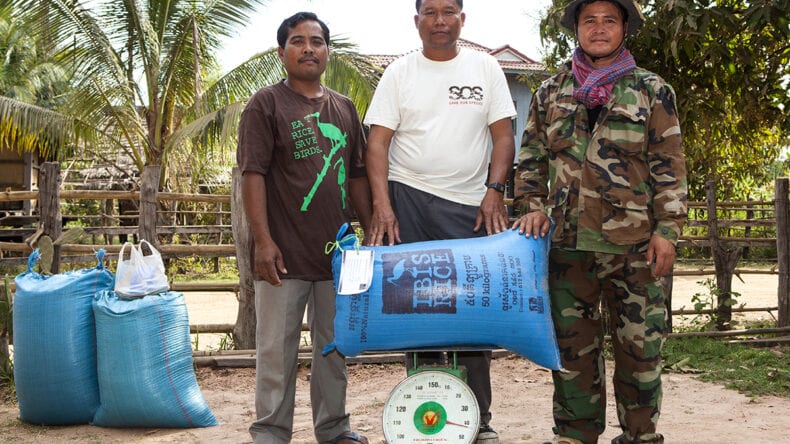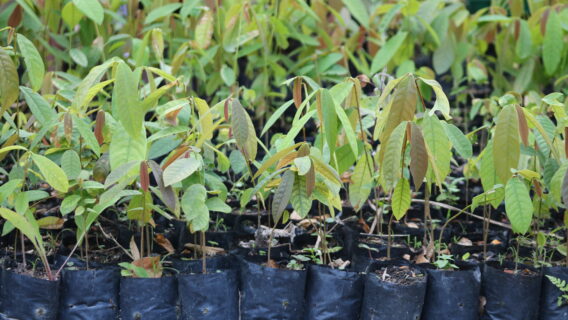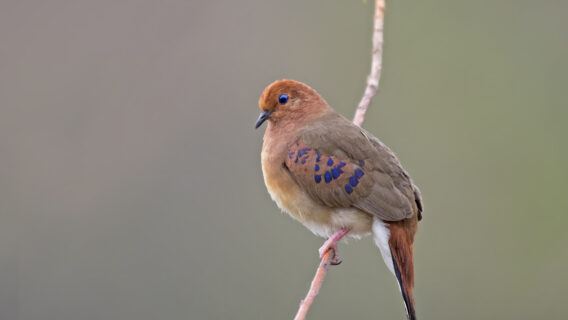Sustainable Livelihoods: a Transformation, Not an Add-On

Dr. Rosie Cooney, chair of the Chair of the IUCN Sustainable Use and Livelihoods Specialist Group (SuLi) works on the policy, conservation and livelihood dimensions of legal and illegal use and trade of wild species. SuLi is an Intercommission group between the Commission on Environmental, Economic and Social Policy (CEESP) and the Species Survival Commission (SSC). Here she explains the benefits of viewing supporting sustainable livelihoods as an activity integral to conservation planning and action.
Why should conservationists care about livelihoods?
Simply put, because the attitudes and buy-in of the indigenous people and local communities who live close to wildlife are – in most cases – crucial for success of conservation on the ground.
They have the power to de-rail conservation efforts through encroachment, poaching, or retaliatory killing of dangerous or damaging wildlife, but they also have the power to conserve wildlife on their lands, provide crucial intelligence and support to law enforcement, or develop and enforce their own rules for conservation.
More fundamentally, of course, conservationists should care about livelihoods because ethics demands it – because conservation efforts are often costly for the livelihoods of local people, and this is unfair.
So why should communities care about conservation?
The history of “mainstream” conservation is – in many areas – a litany of exclusion, alienation, rights lost and knowledge ignored. This has left a legacy of resentment and anger.
Historical conservation burdens are compounded where wildlife is costly or dangerous for local people. Elephants, tigers, crocodiles, bears – these and many other species destroy crops, eat livestock, and kill people.
Heavy-handed or misdirected enforcement efforts can harshly exacerbate this situation and entrench opposition, while increasing hardship for already vulnerable and marginalized people. While some communities have a powerful and enduring culture of protecting wildlife and promoting conservation, these traditions are under threat.
So what does supporting sustainable livelihoods mean for conservation?
Taking communities and their livelihoods seriously in conservation efforts does not mean tacking on a section on “community engagement” or “alternative livelihoods” at the end of a project proposal.
It does not mean “education and awareness”, implying the knowledge transfer is all one way. Solutions cannot be imposed from outside, and there is no recipe.
Taking communities seriously means something much more powerful than this – understanding what the conservation problem looks like from their perspective, building trust to develop genuine partnerships based on reciprocity, and working with communities in jointly designing approaches that work for them and work for conservation – all the way from project (or policy) design to implementation.
Livelihood options need to be freely chosen by people themselves, culturally and socially appropriate: efforts to get pastoralists to take up agriculture or hunters to tend livestock invite disappointment (particularly once the funding runs out).
Livelihoods interventions need clear thinking about how they will actually shift patterns of damaging behaviour. When the benefit flows from livelihood options are tightly linked to the state of the species or habitat, they can incentivize its conservation (e.g. through sustainable use or payment for ecosystem services schemes). If not, however, there is a risk that such interventions achieve little.
This is an enormous challenge in conservation: finding robust and appropriate mechanisms to link local peoples’ livelihoods to conservation outcomes.
Many IUCN Save Our Species projects have been addressing this challenge in a variety of ways according to their circumstances and context.
Projects in the SOS Lemurs and SOS African Wildlife initiatives continue to do so and I look forward to following their progress in transforming the survival prospects for species and the livelihoods of the communities who live with them.










